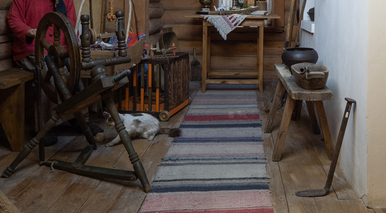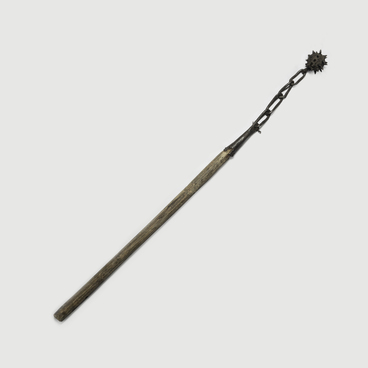The museum collection includes wedding rings of the late 19th century. They are considered one of the main attributes of the wedding ritual and the future family life of those entering into marriage. Many songs are dedicated to this jewelry, a great many legends and various superstitions are associated with it. They call it a symbol of happiness and loyalty.
Wedding rings were first worn in ancient Egypt. According to legends, it was the Egyptians who put the jewelry on the ring finger of the left hand, because the so-called vein of love flows from there. By the ‘vein of love, ’ they understood the line on the hand, going from the ring finger to the fold of the palm. However, according to another version, wedding rings appeared and became widespread in Classical antiquity culture. They were worn by married women, and the ring was a kind of sign that a woman already belonged to a particular man. The male wedding ring in comparison with the female one appeared relatively recently. It is about two hundred years old.
In all cultures, the wedding ring has a deep symbolic meaning. It has no beginning or end. It has a shape of a closed circle that symbolizes eternity. At the same time, in ancient cultures, the circle was a symbol of the heavenly bodies — the Sun and the Moon, which in turn were perceived as deities. Also, the orifices of the ring are often considered as a gateway to some other world. The precious metal of which the rings were made served as a symbol of purity and chastity. Wedding rings may contain ornaments, images, and inscriptions that have a symbolic meaning for the couple.
In Europe, there has long been a tradition of wearing two types of rings — an engagement ring, presented by the groom to his bride at the time of the engagement, and wedding rings, the newlyweds put to finger of each other during the ceremony. It was customary in Russian society to wear one ring. But few could afford gold rings adorned with precious stones. Most people in the country could not afford them, and instead of gold rings they used copper rings. The copper itself resembled gold in appearance but was much cheaper. Such pieces are kept in a museum. Such rings were made either by craftsmen using copper plates or coins, or with the help of a blacksmith.
Wedding rings were first worn in ancient Egypt. According to legends, it was the Egyptians who put the jewelry on the ring finger of the left hand, because the so-called vein of love flows from there. By the ‘vein of love, ’ they understood the line on the hand, going from the ring finger to the fold of the palm. However, according to another version, wedding rings appeared and became widespread in Classical antiquity culture. They were worn by married women, and the ring was a kind of sign that a woman already belonged to a particular man. The male wedding ring in comparison with the female one appeared relatively recently. It is about two hundred years old.
In all cultures, the wedding ring has a deep symbolic meaning. It has no beginning or end. It has a shape of a closed circle that symbolizes eternity. At the same time, in ancient cultures, the circle was a symbol of the heavenly bodies — the Sun and the Moon, which in turn were perceived as deities. Also, the orifices of the ring are often considered as a gateway to some other world. The precious metal of which the rings were made served as a symbol of purity and chastity. Wedding rings may contain ornaments, images, and inscriptions that have a symbolic meaning for the couple.
In Europe, there has long been a tradition of wearing two types of rings — an engagement ring, presented by the groom to his bride at the time of the engagement, and wedding rings, the newlyweds put to finger of each other during the ceremony. It was customary in Russian society to wear one ring. But few could afford gold rings adorned with precious stones. Most people in the country could not afford them, and instead of gold rings they used copper rings. The copper itself resembled gold in appearance but was much cheaper. Such pieces are kept in a museum. Such rings were made either by craftsmen using copper plates or coins, or with the help of a blacksmith.



